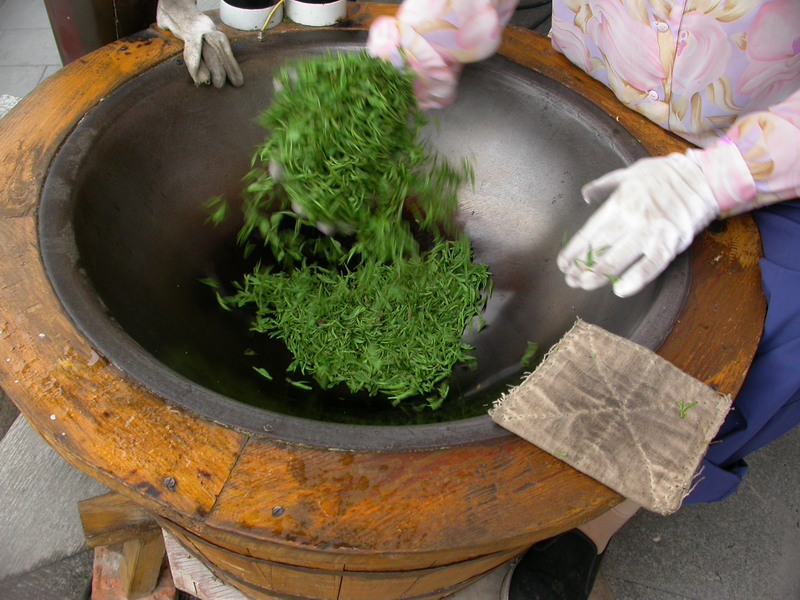|
Tallarín Saltado
Tallarín saltado is a Peruvian dish that is found in chifa cuisine. The name of the dish comes from the word "stir-fry" (''saltear''), in which the food is fried over high heat in small pieces. To make this dish, some cooked noodles, vegetables and portions of meat are sautéed to taste. The seasoning or dressing comes from Chinese spices and sesame oil. Tallarín saltado represents a localized Peruvian variation of chifa cuisine and bears a resemblance to the Chinese stir-fried noodle dishes known internationally as chow mein ''Chow mein'' ( and , ; Cantonese Yale: ''cháaumihn'', Pinyin: ''chǎomiàn'') is a dish of Chinese stir-fried noodles with vegetables and sometimes meat or tofu. Over the centuries, variations of ''chǎomiàn'' were developed in many reg .... When tallarín saltado is served together with '' arroz chaufa'' on a single dish, the combination is colloquially referred to as "aeropuerto", which translates to "airport" in English. References P ... [...More Info...] [...Related Items...] OR: [Wikipedia] [Google] [Baidu] |
Peruvian Cuisine
Peruvian cuisine reflects local practices and ingredients including influences mainly from the indigenous population, including the Andean and Amazonian cuisine, and cuisines brought by immigrants from Europe (Spanish cuisine and Italian cuisine), Asia (Chinese cuisine and Japanese cuisine), and Africa ( Maghrebi cuisine and West African cuisine). Without the familiar ingredients from their home countries, immigrants modified their traditional cuisines by using ingredients available in Peru. The four traditional staples of Peruvian cuisine are corn, potatoes and other tubers, Amaranthaceae (quinoa, kañiwa and kiwicha), and legumes (beans and lupins). Staples brought by the Spanish include rice, wheat and meats (beef, pork and chicken). Many traditional foods—such as quinoa, kiwicha, chili peppers, and several roots and tubers—have increased in popularity in recent decades, reflecting a revival of interest in native Peruvian foods and culinary techniques. Chef Gastón Acuri ... [...More Info...] [...Related Items...] OR: [Wikipedia] [Google] [Baidu] |
Chifa
''Chifa'' is a Chinese Peruvian culinary tradition based on Cantonese elements fused with traditional Peruvian ingredients and traditions. The term is also used to refer to restaurants that serve the ''chifa'' cuisine. Though originating in Peru, the ''chifa'' tradition has spread to neighboring countries like Ecuador, Chile, and Bolivia through increased Chinese immigration. Chinese-Peruvian food has become one of the most popular types of food in Peru. The first Chinese-Peruvian fusion restaurants were opened in Lima in around 1920 in Lima's Chinatown (Barrio Chino). There are thousands of ''chifa'' restaurants across all districts of Lima and many more throughout other cities of Peru, with sometimes multiple independent restaurants operating in close proximity on a single city block. Etymology The majority of Chinese Peruvians have origins in southern China, where Cantonese is spoken. The Comisión Lexicografía de la Academia Peruana (CLAP) proposed that the word ''chifa ... [...More Info...] [...Related Items...] OR: [Wikipedia] [Google] [Baidu] |
Stir Frying
Stir frying ( zh, c= 炒, p=chǎo, w=ch'ao3, cy=cháau) is a cooking technique in which ingredients are fried in a small amount of very hot oil while being stirred or tossed in a wok. The technique originated in China and in recent centuries has spread into other parts of Asia and the West. It is similar to sautéing in Western cooking technique. Wok frying may have been used as early as the Han dynasty (206 BC – 220 AD) for drying grain, not for cooking. It was not until the Ming dynasty (1368–1644) that the wok reached its modern shape and allowed quick cooking in hot oil. However, there is research indicating that metal woks and stir-frying of dishes were already popular in the Song dynasty (960–1279), and stir-frying as a cooking technique is mentioned in the 6th-century AD Qimin Yaoshu. Stir frying has been recommended as a healthy and appealing method of preparing vegetables, meats, and fish, provided calories are kept at a reasonable level. The English-lan ... [...More Info...] [...Related Items...] OR: [Wikipedia] [Google] [Baidu] |
Chow Mein
''Chow mein'' ( and , ; Cantonese Yale: ''cháaumihn'', Pinyin: ''chǎomiàn'') is a dish of Chinese stir-fried noodles with vegetables and sometimes meat or tofu. Over the centuries, variations of ''chǎomiàn'' were developed in many regions of China; there are several methods of frying the noodles and a range of toppings can be used. It was introduced in other countries by Chinese immigrants. The dish is popular throughout the Chinese diaspora and appears on the menus of most Chinese restaurants abroad. It is particularly popular in India, Nepal, the UK, and the US. Etymology 'Chow mein' is the Americanization of the Chinese term for fried noodles (). Its pronunciation comes from the Cantonese pronunciation "chaomin"; the term first appeared in English (US) in 1906. The term 'chow mein' means 'stir-fried noodles', also loosely translated as "fried noodles" in English, ''chow'' () meaning 'stir-fried' (or "sautéed") and ''mein'' () meaning "noodles". Regional cuisin ... [...More Info...] [...Related Items...] OR: [Wikipedia] [Google] [Baidu] |
Arroz Chaufa
''Arroz chaufa'', also known as ''chaufa'', is a fried rice dish from Peru. It is part of the Chinese Peruvian cuisine, which is called ''chifa''.«¿Cómo surge el Arroz chaufa, uno de los platos fusión más populares en Perú?» http://www.peru.travel. 5 de julio de 2021. Consultado el 27 de noviembre de 2021.«Historia del arroz chaufa» Abrecht. Consultado el 27 de noviembre de 2021 [...More Info...] [...Related Items...] OR: [Wikipedia] [Google] [Baidu] |


